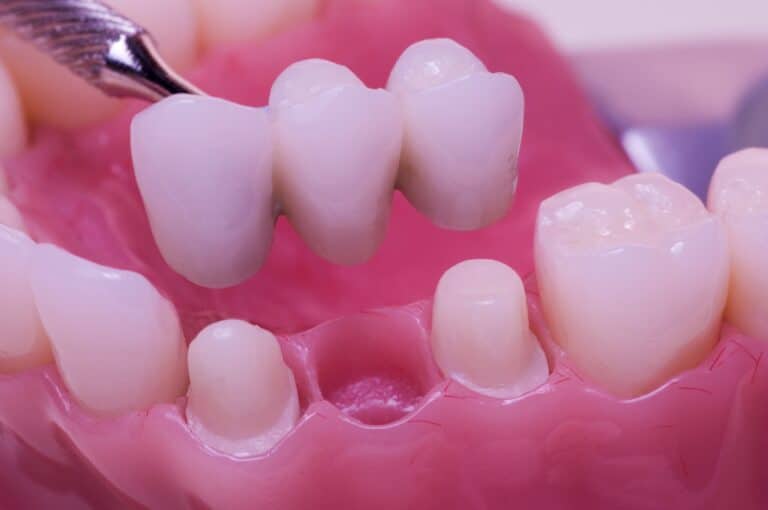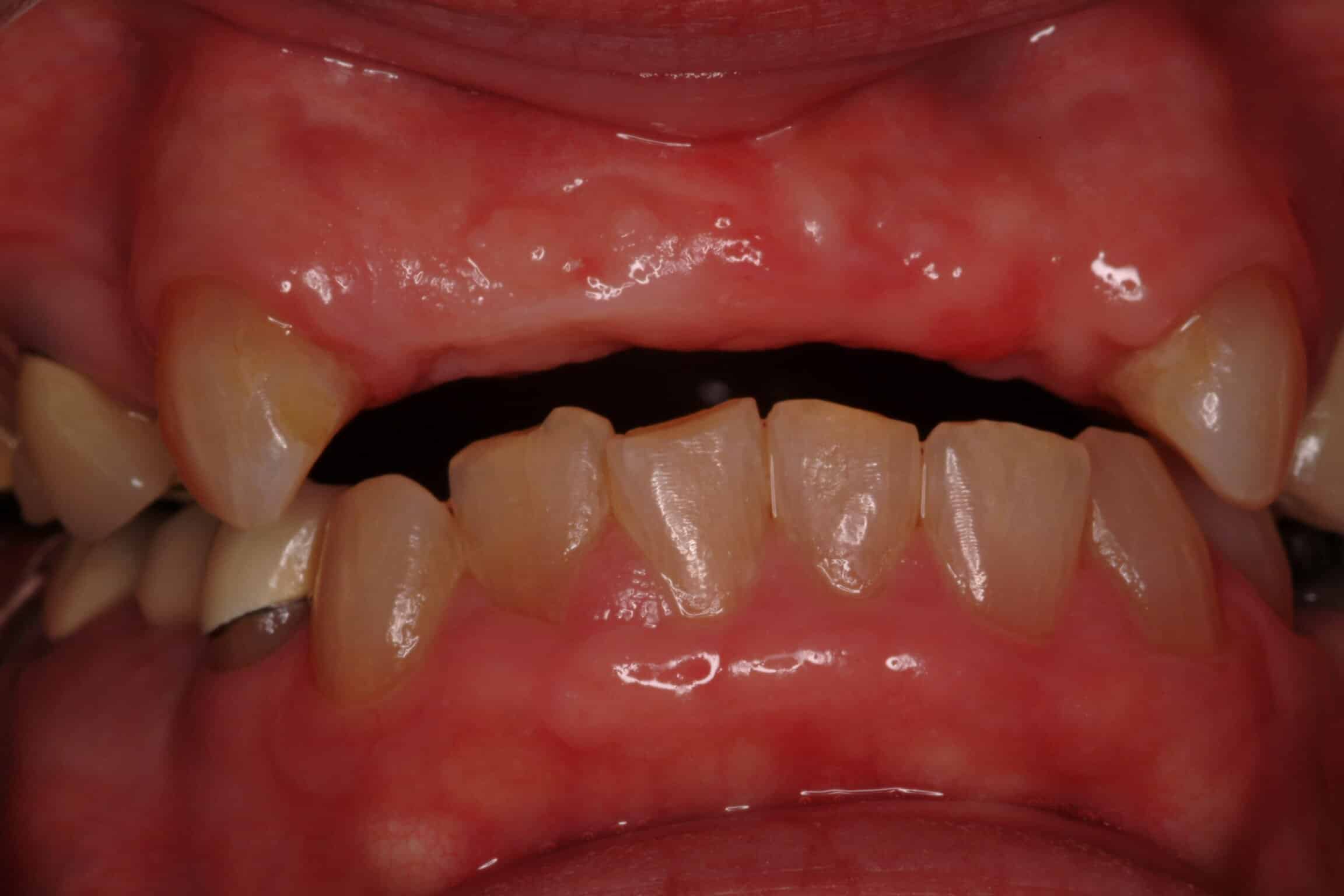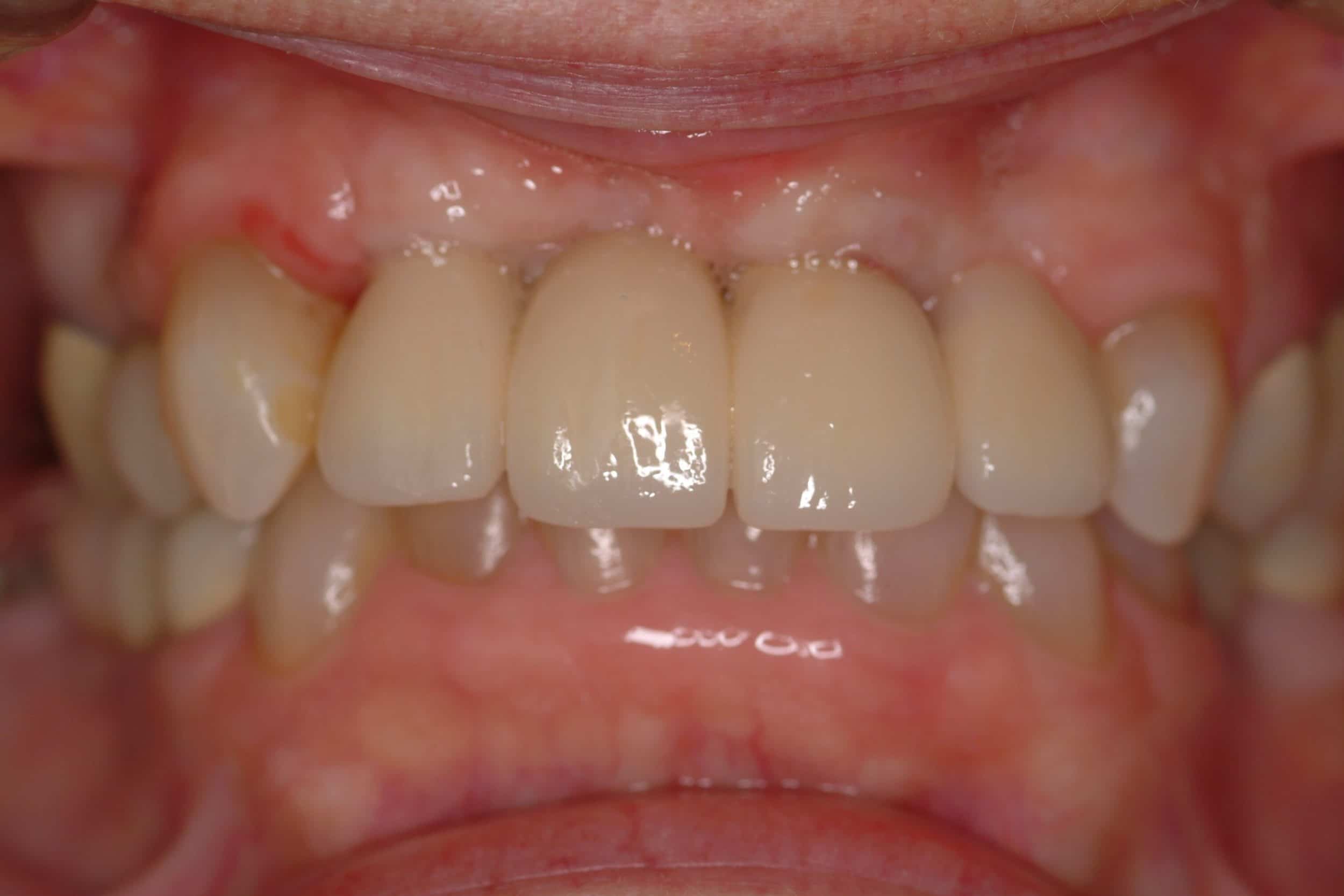What is a Porcelain Fixed Bridge?
A porcelain fixed bridge is a fixed (non-removable) appliance and is an excellent way to replace missing teeth.
Why Should I Get a Dental Bridge?
- Fill space of missing teeth.
- Maintain facial shape.
- Prevent remaining teeth from drifting out of position.
- Restore chewing and speaking ability.
- Restore your smile.
- Upgrade from a removable partial denture to a permanent dental appliance.
Types of Dental Bridges
Traditional Bridges – Also known as fixed bridges, traditional bridges are used to replace one or more missing teeth. The procedure involves creating a crown for the tooth or implant on either side of the missing tooth, with a pontic, or a false tooth, in between. Fixed bridges are the most common type of dental bridges and are either made out of porcelain fused to metal or out of ceramics.
Resin-Bonded Bridges – Also known as Maryland-bonded bridges, resin-bonded bridges are primarily used for the front teeth. They are less expensive than fixed bridges and are best for use when the teeth are healthy and do not have any large fillings. During this procedure, a false tooth is fused with resin to metal bands which are then bonded to the adjacent teeth and hidden from view. Resin-bonded bridges require only minimal preparation of the adjacent teeth.

Cantilever Bridges – These bridges are used in areas of the mouth that are under minimal stress, such as the back teeth. Cantilever bridges are recommended when there are teeth on only one side of the open space.
"Much thanks for all your excellent dental work, as well as your comforting chair side manner. Thanks also to your excellent staff."
Porcelain Bridge Procedure
Getting a bridge usually requires two or more visits.
At the first visit,
- While the teeth are numb, the two anchoring teeth are prepared by removing a portion of enamel to allow for a crown.
- Next, a highly accurate impression (mold) is made which will be sent to a dental laboratory where the bridge will be fabricated. In addition, a temporary bridge will be made and worn for several weeks until your next appointment.
- Your permanent bridge will be carefully checked, adjusted, and cemented to achieve a proper fit.
- Occasionally Dr. Holbrook may only temporarily cement the bridge, allowing your teeth and tissue time to get used to the new bridge. The new bridge will be permanently cemented at a later time.
- You will receive care instructions at the conclusion of your treatment.
Proper brushing, flossing, and regular dental visits will aid in the life of your new permanent bridge. Dental bridges are highly durable and will last many years, however, they may need replacement or need to be re-cemented due to normal wear.
Porcelain Fixed Bridges vs. Other Tooth Replacement Options
When considering tooth replacement options, it’s vital to compare the advantages and drawbacks of the most common solutions: porcelain fixed bridges, dental implants, and dentures.
Porcelain Fixed Bridges
Pro:
- Aesthetically pleasing and natural-looking.
- Less invasive and quicker procedure compared to implants.
- Cost-effective compared to implants.
- Provides good functionality for chewing and speaking.

Cons:
- Requires alteration of adjacent healthy teeth.
- Not as durable as implants; typically lasts 10 to 15 years.
- Underlying risk of decay if oral hygiene is not maintained.
Dental Implants
Pro:
- Highly durable, often lasting a lifetime.
- Do not require altering adjacent teeth.
- Maintain natural bone and prevent bone loss.
- Offer superior aesthetic and functional results.
Pro:
- Highly durable, often lasting a lifetime.
- Do not require altering adjacent teeth.
- Maintain natural bone and prevent bone loss.
- Offer superior aesthetic and functional results.
Dentures
Cons:
- More invasive procedure with a longer recovery period.
- Higher initial cost.
- Requires sufficient bone density, which might necessitate additional procedures like bone grafts.
Cons:
- Less stable than bridges or implants, affecting eating and speaking.
- May cause bone loss over time due to lack of stimulation.
- Require regular maintenance and can be less comfortable.
Each tooth replacement option offers distinct advantages and challenges. Porcelain fixed bridges provide a balanced solution for many, blending aesthetics, functionality, and cost-effectiveness. However, the best choice depends on individual dental health, budget, and personal preferences. Your dentist can guide you in choosing the option that best meets your needs.
Porcelain Bridge Before and After


Porcelain Fixed Bridges FAQs
How long does a bridge last?
Dental bridges on average can last 5 to 15 years in a patient's mouth. Learning how to take care of your dental bridge is important. Depending on the oral hygiene of the patient the lifespan can vary. With regular checkups and good oral hygiene its common for the bridge to last over 10 years.
What is the recovery time after getting a porcelain fixed bridge?
Recovery from the procedure of getting a porcelain fixed bridge is generally minimal. Most patients can resume their normal activities the next day. Mild soreness can occur, but this usually subsides within a few days. It's important to follow the specific care instructions provided by Dr. Holbrook to ensure a smooth recovery.
How do I care for my porcelain fixed bridge?
Caring for a porcelain fixed bridge involves maintaining good oral hygiene practices. It's important to brush twice a day and floss daily. Special flossing tools such as water flossers or floss threaders are recommended for cleaning under and around the bridge. Regular dental check-ups and cleanings are also essential to maintain your bridge's and surrounding teeth' health.
Can a porcelain fixed bridge be replaced or repaired?
Yes, a porcelain fixed bridge can be replaced or repaired if necessary. Over time, a bridge may wear down or become damaged, requiring repair or replacement. Regular dental visits are crucial for detecting and addressing any issues promptly.
What are the potential risks or complications of a porcelain fixed bridge?
While generally safe, porcelain fixed bridges can pose risks or complications, such as increased sensitivity in adjacent teeth, the potential for decay under the bridge if not properly maintained, and the possibility of the bridge becoming loose or dislodged. Discussing these risks with your dentist will help you understand how to minimize them.
How do I know I am a good candidate for a porcelain fixed bridge?
Ideal candidates for a porcelain fixed bridge are those missing one or more teeth with healthy adjacent teeth to support the bridge. Adequate bone support and good overall oral health are also important. Dr. Holbrook can determine your suitability for a bridge during a consultation.
Schedule A Consultation
If you are interested porcelain fixed bridges and would like to see if you are a good candidate, contact our office at 505-881-1159.






